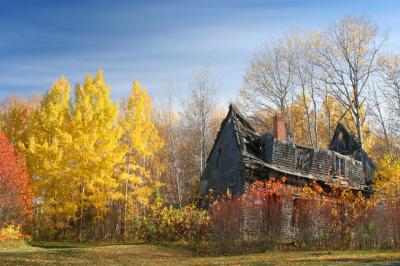Prevention of Winter Depression

Seasonal Affective Disorder (SAD) or Winter Depression can be succesfully treated with bright light therapy. Across studies, 53% of cases of SAD remit with bright light therapy. This involves sitting in front of full-spectrum lights that mimic sunlight on a regular basis — typically for about 30 minutes to 60 minutes each morning. Sometimes one or two weeks is sufficient but some patients will need this for the whole season. This hampers compliance with this therapy, only 41% of patients continued regular light therapy, 59% discontinued light therapy due to ineffectiviness and inconvenience. More important is the prevention of the recurrence of this kind of depressive episodes over subsequent winter seasons.
Cognitive behavioral Therapy could represent a more effective, practical, and palatable approach to long-term SAD management than light therapy
This conclusion was based on a 1 year follow-up study of two pilot studies. The first was an uncontrolled feasability study comparing a novel group CBT, light therapy and the combination of both. The second was the first controlled study comparing CBT, light therapy and the combination of both in 61 patients with SAD compared to a control group of waiting list patients.
The researchers pooled all available data from the naturalistic follow up during the subsequent winter season of participants who had not dropped out of the study.
Both CBT and CBT with light therapy did significantly better at follow up compared to light therapy alone. CBT treated participants &% had another depressive episode in the subsequent winter season, fo CBT and light therapy 5,5%, and for light therapy alone 37%.
Among completers who provided 1-year data, all statistically significant differences between the CBT and light therapy groups persisted after adjustment for ongoing treatment with light therapy, antidepressants, and psychotherapy
Limitations of this study
It was a naturalistic follow up study, the treatment duing this follow up period varied very much. The participants in the waiting list group from the second trial were not assessed.
A randomized controlled trial with follow up is still needed to confirm these promising results.
![]()
Rohan, K., Roecklein, K., Lacy, T., & Vacek, P. (2009). Winter Depression Recurrence One Year After Cognitive-Behavioral Therapy, Light Therapy, or Combination Treatment Behavior Therapy, 40 (3), 225-238 DOI: 10.1016/j.beth.2008.06.004
Science Report » Blog Archive » Prevention of Winter Depression
September 23, 2009 @ 3:50 pm
[…] Go to Publisher to continue reading […]
December 22, 2009 @ 5:42 am
Light therapy will never really work as well as cognitive behavioral therapy because the treatment fails to create an understanding of how the patient perceives the world. They are not emotionally involved in the therapy and instead are waiting for emotional secluded treatment to do its work with no personal input. CBT gets the patient involved in the therapy process. By being active in overcoming SAD, this gives the patient the understanding of the therapy and can help the process by seeing the light at the end of the tunnel (excuse the pun). Dr. Prout is the expert who I base my knowledge and research with when it comes to CBT. He is an accomplished psychologist who has produced highly regarded publications in this field. A full reference of his work can be found, at http://www.mauricefprout.com